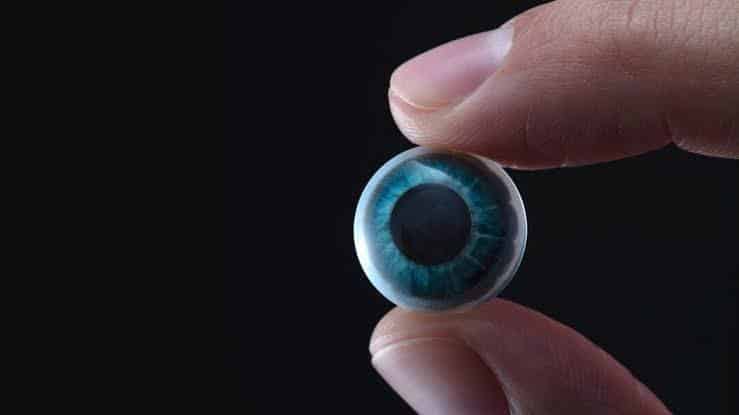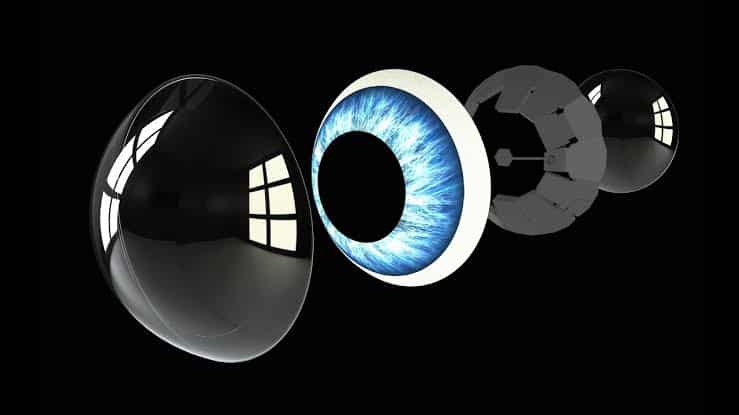
You put on your leggings and sneakers and head out for a run. They’ve now reached a distance of ten kilometres. pulling. You are missing your daily tape because you are not at the gym. To be honest, you don’t care about wearing a smartwatch or a Fitbit activity tracker.
Nothing that necessitates a periodic glance at the wrist. It makes no difference. And it doesn’t matter because you have all the data you need: the route, your heart rate, exercise routines, calories burned, time spent running… All of this fades away in front of your eyes, like data poised in mid-air over the countryside.
What’s the secret? None. You’re wearing smart contact lenses, a technology that hopes to replace or, at the absolute least, put augmented reality (RA) and virtual reality (VR) glasses out of business by using their greatest assets: their size, discretion, and convenience.
Although it may sound like science fiction, businesses are developing lenses that will provide us with the same information as a smartwatch but projected directly into our eyeballs. Mojo Vision has been working on contact lenses with a microLED screen the size of a grain of sand and sensors powered by solid-state batteries for a long time. All of this is built into a prosthesis that functions similarly to traditional contact lenses and aids in vision correction.
Opportunities as well as difficulties.
“By combining a micro-optical and a custom silicon backboard chip, the screen can project bright text, graphics, and high-resolution video on the user’s retina that can be seen indoors, outdoors, or even with their eyes closed,” the company claims. It claims that its MicroLed is “the smallest and densest screen ever created for dynamic content,” with a pixel size of 1.8 microns and a diameter of 0.5 millimetres (mm)”
A system that allows you to follow an eye is one of its best features when compared to other VR and AR glasses. The business claims, “You can deliver essential information without interrupting or disturbing you.” Much of its strategy is based on invisible computing, which he identifies as “a computer experience in which information is available and delivered only when it is needed,” discreetly, rapidly, and without requiring the user’s full attention.
In theory, at least. However, how can you put this into practise? On a daily basis, what programmes do you use? A large portion of his speech is devoted to sports, and the company has already announced partnerships with global corporations such as Adidas and 18Birdies. Its purpose is to allow athletes to obtain real-time statistics and information about their bodies and corneal strike during exercise, without having to look away, glance down, or use their hands to activate any device.
Aside from running tracks and gyms, smart lenses offer the same range of options as RA or RV glasses, with the added benefit of being almost unnoticeable. They can be invaluable to a speaker who doesn’t want to use notes; musicians who want to see scores and lyrics slide before their eyes; or any traveller who needs to catch a flight and would appreciate the ability to consult information about their service, such as the terminal or boarding gate, without having to search for screens.
Mojo isn’t the only one who is interested in the potential that smart contact lenses may bring. As the BBC points out, some people are already looking at how it could be used in the medical profession.

For example, researchers at the University of Surrey have developed a contact lens featuring a photodetector, a temperature sensor, and a glucose sensor that can measure tear fluid levels. They claim that the prosthesis is flexible and thin, and that because the sensor is in close contact with the eye, its measurements are extremely precise. Other intriguing uses include the diagnosis of illnesses and even therapy planning.
Of course, advantages and strengths aren’t the only factors to consider.
Smart contact lenses pose a number of difficulties. They provide a technological solution right away. How will the batteries be charged, given that they must be extremely small and thin? What level of autonomy will they provide? What method will you use to communicate? The lens sensors and AR content are transmitted to the MicroLED screen via an ASIC with an ARM Core M0 processor, which Mojo had to create. Furthermore, according to CNET, it necessitates the wearing of a gadget around the neck.
Aside from the technological difficulties, What will happen to a device like the one proposed by Mojo Vision if using standard contact lenses necessitates meticulous cleaning or avoiding excessive use? Their lenses had not yet been approved for use by the administration, at least as of April, and they were still undergoing tests to polish their mechanisms.
The most difficult of its tasks, however, is at the normative level, where it must strike a delicate balance between privacy and intimacy, both for the user and for those who are in his environment. “Any discrete gadget with a front camera that allows you to shoot images or movies poses a risk to passersby’s privacy,” says Access Now’s Daniel Leufer to the BBC.
What happens when it comes to a lens capable of going completely unnoticed? If it’s already a point of contention in VR/RA glasses, which can activate a red pilot when they record, what happens when it comes to a lens capable of going completely unnoticed? Challenges do not just alter the user’s environment; they also affect him in some ways. What would happen if a contact lens could collect information on what we see and how it affects our bodies, as proposed by Mojo?
